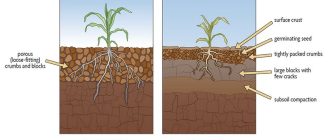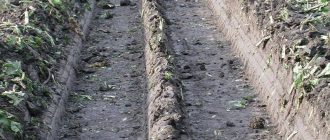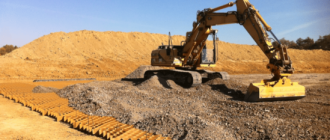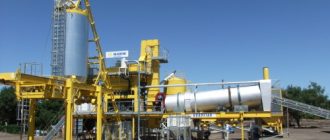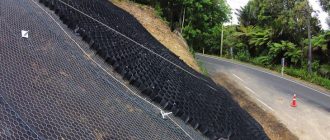What is the Objective of Soil Compaction?
Soil compaction refers to the process of increasing the density of soil particles by reducing the volume of air spaces between them. This is achieved by applying a mechanical force on the soil, which compresses the soil particles and eliminates air voids. Soil compaction is an essential aspect of various construction and agricultural practices, as it significantly impacts the performance and stability of structures and crops alike.
The importance of soil compaction lies in its ability to improve the load-bearing capacity and stability of the soil. Compacted soil can better support structures such as roads, buildings, and foundations, reducing the risk of settlement and structural failures. In agricultural settings, compacted soil promotes better root growth and nutrient uptake, leading to healthier crops with increased yields.
The objectives of soil compaction can vary depending on the specific application. In construction, the primary objective is to achieve a suitable level of compaction that meets the project’s requirements, ensuring the stability and longevity of the structure. For agricultural purposes, compaction aims to create an optimal soil environment that allows for proper root development, water infiltration, and nutrient availability.
It is crucial to note that while soil compaction offers numerous benefits, excessive compaction can have adverse effects. Over-compacted soil can hinder drainage, impede root penetration, and restrict the movement of gases in the soil. Therefore, it is essential to strike a balance and carefully consider the compaction requirements based on the specific soil type and intended use.
In conclusion, understanding the importance and objectives of soil compaction is key to achieving optimal performance in construction and agricultural practices. By effectively managing soil compaction, one can enhance structural stability, increase crop yields, and create a favorable environment for healthy plant growth.
The Significance of Soil Compaction
Soil compaction is a process that involves reducing the volume of soil particles by applying pressure. It is an important concept in the field of agriculture and construction, with various objectives and benefits. Understanding the significance of soil compaction can help in achieving optimal soil health and improved productivity.
1. Increased Soil Density: Compaction increases soil density, which improves the stability and load-bearing capacity of the soil. This is particularly important in construction projects, where compacted soil can provide a solid foundation for buildings and structures.
2. Improved Drainage: Compacted soil has decreased porosity, which reduces the permeability of water. This can be beneficial in areas with high rainfall, as it helps in preventing waterlogging and soil erosion. It also ensures better water retention, allowing plants to access water for a longer duration.
3. Enhanced Nutrient Availability: Soil compaction increases the contact between soil particles and plant roots. This promotes better nutrient uptake by the plants, leading to improved growth and crop yields. Compacted soil also prevents nutrient leaching, preserving the nutrients within the root zone.
4. Prevention of Soil Settling: Compacted soil is less prone to settling and subsidence, which can be common in loose or uncompacted soils. This is crucial in areas prone to earthquakes or heavy machinery operations, where soil stability is of utmost importance for the safety of structures and equipment.
5. Weed and Pest Control: The denser structure of compacted soil makes it more difficult for weed seeds to germinate and thrive. Compaction also hinders the movement of pests and insects through the soil, reducing their impact on crops and plants.
6. Improved Seedbed Preparation: Compacting the soil can create a smooth and level seedbed, which is essential for effective planting and germination of seeds. It provides a stable environment for the growth of roots, ensuring optimum nutrient and water absorption.
7. Better Soil Aeration: Compaction can help in creating a more aerated soil environment by reducing large pores and increasing the number of smaller pores. This promotes better gas exchange between the soil and the atmosphere, facilitating the respiration of plant roots and soil microorganisms.
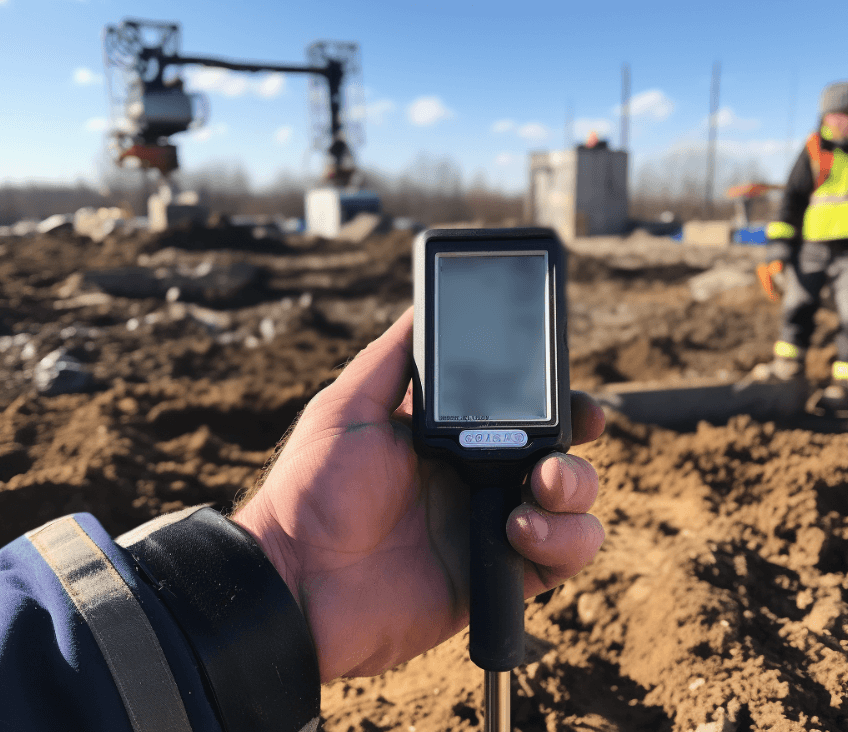
Overall, soil compaction plays a crucial role in agricultural and construction practices. It helps in achieving optimal soil conditions for plant growth, while also providing stability and durability for various structural applications. By understanding the significance of soil compaction, farmers, engineers, and land managers can make informed decisions to enhance soil health and productivity.
The Definition and Impact of Soil Compaction
Soil compaction refers to the process in which soil particles are compressed together, reducing the pore space between them. It is a natural process that occurs due to various factors such as foot traffic, machinery operation, and weather conditions. However, when compaction exceeds a certain threshold, it can have detrimental effects on soil health and plant growth.
Soil compaction can impact soil in several ways:
- Reduced pore space: As soil particles are compressed, the pore space between them is reduced. This limits the infiltration of water, air, and nutrients, leading to poor drainage and aeration.
- Inhibited root growth: Compacted soil has limited pore space, which makes it difficult for plant roots to penetrate and explore the soil for nutrients and water. This can result in stunted root development and reduced plant health.
- Increased soil erosion: Compacted soil is more susceptible to erosion by wind and water. The reduced pore space and lack of vegetation cover make it easier for soil particles to be carried away, leading to soil loss and degradation.
- Decreased water holding capacity: Compacted soil has reduced pore space, which hinders its ability to hold water. This can result in increased runoff and reduced water availability for plant uptake.
- Decreased nutrient availability: Soil compaction can limit the movement and availability of nutrients in the soil. This can negatively affect plant growth and productivity.
In summary, soil compaction is a process that reduces the pore space in soil, impacting its ability to store water, facilitate root growth, and support plant nutrition. It can lead to poor drainage, erosion, and decreased plant health. Understanding the definition and impact of soil compaction is crucial in implementing practices to mitigate its negative effects and maintain soil health.
The Role of Soil Compaction in Agriculture
Soil compaction is a critical factor in agricultural practices as it directly affects the productivity and sustainability of crop production. The objective of soil compaction in agriculture is to improve the physical properties of the soil, ensuring optimal conditions for plant growth and yield.
Compacted soil can hinder root development, restrict water infiltration and drainage, reduce nutrient availability, and affect the overall structure of the soil. It can result in poor crop establishment, decreased yields, and increased vulnerability to pests, diseases, and environmental stresses. Therefore, managing soil compaction is crucial for maintaining soil health and maximizing agricultural productivity.
The main objectives of soil compaction in agriculture are:
- Improved soil structure: Soil compaction helps in breaking down large soil aggregates into smaller ones, creating a more stable soil structure. It helps to reduce soil erosion and improves the ability of the soil to hold water and nutrients.
- Enhanced root development: Adequate soil compaction promotes the penetration of roots into the soil, facilitating better nutrient uptake and water absorption. It allows roots to anchor firmly, ensuring plants’ stability and resistance to environmental stresses.
- Optimized water management: Proper compaction helps to create a balance between water infiltration and drainage. It prevents excessive water loss through runoff and encourages moisture retention in the soil, reducing irrigation needs and conserving water resources.
- Increased nutrient availability: Soil compaction improves nutrient cycling and availability by enhancing microbial activity and nutrient mineralization. It promotes the release of nitrogen, phosphorus, and other essential nutrients required for plant growth.
- Reduced soil erosion: Compacted soil has a higher resistance to erosion, reducing the risk of soil loss due to wind or water. It helps in preserving the topsoil and protecting the soil’s valuable nutrients from being washed away.
In order to achieve these objectives, farmers and agricultural professionals employ various soil compaction techniques, such as tillage practices, cover cropping, and the use of agricultural machinery with appropriate tire pressure and axle loads. By carefully managing soil compaction, farmers can maximize crop productivity, preserve soil health, and contribute to sustainable agricultural practices.
The Effects of Soil Compaction on Plant Growth
Soil compaction has a direct influence on the growth and development of plants. When the soil becomes compacted, it becomes difficult for plant roots to penetrate and spread, leading to a range of negative effects.
Objective: The objective of this article is to outline the various effects of soil compaction on plant growth.
Compaction: Compaction occurs when the soil particles are pressed together, reducing the pore spaces within the soil. This can be caused by heavy machinery, foot traffic, or natural processes such as heavy rainfall.
Here are some of the effects of soil compaction on plant growth:
- Reduced root growth: Compacted soil limits the space available for root expansion. This leads to shallower and less extensive root systems, which can result in reduced nutrient and water uptake.
- Inhibited water infiltration: Compacted soil has reduced pore spaces, making it difficult for water to infiltrate. This can lead to poor drainage and waterlogging, depriving plants of oxygen and suffocating the roots.
- Decreased nutrient availability: Compaction can limit the movement of nutrients through the soil, making it harder for plants to access the essential elements they need for growth. This can result in nutrient deficiencies and stunted plant growth.
- Increased runoff: Compacted soil has decreased infiltration capacity, causing water to run off rather than being absorbed. This can lead to soil erosion and nutrient loss, further compromising plant growth.
- Restricted gas exchange: Compacted soil can inhibit the movement of gases, such as oxygen and carbon dioxide, between the roots and the atmosphere. This can impair crucial processes like photosynthesis and respiration, affecting overall plant health and growth.
To mitigate the negative effects of soil compaction on plant growth, it is important to implement proper soil management practices. These may include techniques like deep tilling to break up compacted layers, adding organic matter to improve soil structure, and implementing proper irrigation and drainage systems.
In conclusion, soil compaction can have detrimental effects on plant growth. It is crucial to be aware of these effects and take appropriate measures to prevent or mitigate soil compaction to ensure optimal plant growth and productivity.
The Relationship Between Soil Compaction and Water Drainage
Objective: The objective of this section is to understand the relationship between soil compaction and water drainage.
Soil compaction refers to the process of increasing the density and reducing the porosity of soil. This can have a significant impact on water drainage in an area. When soil is compacted, the spaces between soil particles are reduced, limiting the movement of water through the soil profile.
Compacted soil has a lower infiltration rate, which means that water is unable to penetrate the soil surface effectively. Instead, the water accumulates on the surface, leading to increased surface runoff and potential erosion. This can be especially problematic in areas with heavy rainfall or poor drainage systems.
Additionally, compacted soil can create a hard surface layer that prevents water from percolating deeper into the soil profile. This can result in shallow water tables and poor groundwater recharge. It also limits the availability of water for plant roots, affecting plant growth and productivity.
Effects of Soil Compaction on Water Drainage:
- Increased surface runoff
- Potential erosion
- Shallow water tables
- Poor groundwater recharge
- Limited availability of water for plant roots
- Reduced plant growth and productivity
It is essential to address soil compaction to ensure proper water drainage in an area. One effective method to alleviate soil compaction is through soil aeration. Soil aeration involves mechanically or physically creating channels in the soil, allowing for improved air and water movement. Additionally, implementing proper soil management practices, such as avoiding excessive tillage and using cover crops, can help prevent soil compaction.
By understanding the relationship between soil compaction and water drainage, land managers and farmers can take appropriate measures to maintain optimal soil conditions for a healthy and productive environment.
The Objectives of Soil Compaction
Soil compaction is a crucial process in the field of soil engineering. Its objectives vary depending on the specific needs of a project or site. However, there are some common objectives that soil compaction aims to achieve. These objectives include:
- Increase Soil Stability: One of the main objectives of soil compaction is to increase the stability of the soil. Compacted soil has reduced voids and increases in density, which improves its ability to support loads and reduces the likelihood of settlement or soil failure.
- Enhance Load-Bearing Capacity: Soil compaction aims to improve the load-bearing capacity of the soil. By reducing the air voids within the soil, compaction increases the ability of the soil to withstand the applied loads without excessive deformation or settlement.
- Prevent Soil Erosion: Compacted soil is less susceptible to erosion compared to loosely packed soil. By compacting the soil, its particles become tightly bound together, making it more resistant to the erosive forces of wind or water.
- Improve Drainage: Compaction can help improve the soil’s drainage characteristics. By reducing the voids and increasing the soil’s density, water can flow more freely through the soil rather than pooling on the surface or causing waterlogging.
- Optimize Construction Techniques: Soil compaction enables the use of various construction techniques and methods that rely on stable, compacted soil. These techniques include foundations, road construction, embankments, dams, and other infrastructure projects.
- Ensure Long-Term Durability: Compacted soil tends to be more durable compared to loose soil. The increased density and reduced voids enhance the soil’s resistance to deterioration over time, ensuring the long-term stability and performance of the engineered structure or project.
Overall, the objectives of soil compaction revolve around increasing the stability, load-bearing capacity, and durability of the soil for various engineering and construction purposes.
The Purpose of Achieving Optimum Soil Density
Soil compaction is a process that involves increasing the density of the soil by reducing the pore spaces between soil particles. This is done to improve the soil’s strength and stability, as well as enhance its ability to support structures and vegetation. Achieving optimum soil density is an essential step in various construction and agricultural activities.
The purpose of achieving optimum soil density is to create a solid foundation that can withstand heavy loads and minimize settlement. Compacted soil has increased load-bearing capacity, which is crucial for constructing buildings, roads, and other infrastructure projects. Without proper compaction, the soil may become unstable and prone to cracks, sinking, or shifting over time.
By reaching the optimum soil density, the soil’s ability to resist deformation and consolidation is improved significantly. This is especially important in areas with soft or loose soils, where compaction can help prevent the compaction and sinking that may occur due to additional stress.
Furthermore, achieving optimum soil density promotes better water drainage and reduces the risk of erosion. Compacted soil has reduced pore spaces, which restrict the flow of water through the soil. This helps prevent water from pooling and causing damage to the soil and nearby structures. Compaction also improves the infiltration capacity of the soil, allowing it to absorb water more efficiently and reduce surface runoff.
Optimum soil density is also crucial for agricultural activities. Compacted soil promotes better root development and nutrient uptake, leading to healthier and more productive plants. It helps prevent soil erosion and improves water and nutrient retention, ensuring that crops have access to the necessary resources for growth.
To achieve optimum soil density, various compaction techniques and equipment are used, such as compactors, rollers, and vibratory plates. The compaction process involves applying pressure to the soil to reduce the air voids and increase the soil’s density. It is essential to follow proper compaction procedures and specifications to ensure effective and durable results.
Benefits of achieving optimum soil densityBenefitsExplanation
| Improved load-bearing capacity | Compacted soil can bear heavier loads without settling or shifting. |
| Enhanced stability | Compacted soil is less prone to slope failures and other forms of instability. |
| Reduced risk of erosion | Compacted soil reduces the risk of water pooling and surface runoff, minimizing erosion. |
| Improved water drainage | Compacted soil allows for better water infiltration and drainage, preventing waterlogging. |
| Better root development | Compacted soil provides a stable and supportive environment for plant roots to grow. |
In conclusion, achieving optimum soil density through compaction is essential for various construction and agricultural purposes. It helps create a stable foundation, improves load-bearing capacity, reduces the risk of erosion, and promotes better plant growth. Proper compaction techniques and equipment must be used to ensure effective and long-lasting results.
The Importance of Soil Stability and Load-Bearing Capacity
Soil stability and load-bearing capacity are crucial factors to consider in construction projects and engineering applications. The soil’s ability to support heavy loads and maintain stability is essential for the success and longevity of structures built upon it.
When it comes to construction, the objective is to ensure that the soil can bear the weight of the structure without excessive settlement or deformation, which can lead to structural failures. By compacting the soil, engineers can increase its load-bearing capacity and improve overall stability.
Compacted soil provides a solid foundation for buildings, roads, bridges, and other infrastructure projects. It minimizes the risk of settlement and improves the structural integrity of the constructed elements. Moreover, compacted soil helps distribute the load evenly, preventing localized stress points that can lead to stability issues.
Another important objective of soil compaction is to increase the soil’s shear strength. Shear strength refers to the soil’s ability to resist deformation under applied forces, such as those caused by the weight of a structure or natural events like earthquakes or heavy rains. By compacting the soil, its particles are densely packed, resulting in increased shear strength.
In addition to structural stability, compacted soil also plays a crucial role in preventing water infiltration. When soil is properly compacted, it becomes denser, reducing pore spaces and minimizing the movement of water through the soil. This helps to prevent erosion and maintain the stability of the construction site.
Soil stability and load-bearing capacity are essential considerations in various industries, including civil engineering, geotechnical engineering, and construction. Proper soil compaction techniques and testing methods ensure that the soil meets the required specifications and can support the intended loads and structures with minimal risk of failure.
The Role of Soil Compaction in Preventing Erosion
One of the important objectives of soil compaction is to prevent erosion. Erosion refers to the process by which soil particles are detached and transported away by wind or water. It is a natural process that can be accelerated by human activities such as agriculture, construction, and deforestation. When soil becomes compacted, it becomes more resistant to erosion.
Compaction improves soil structure: When soil is compacted, the particles are packed closely together, leaving little space for water or air to move through. This results in a more stable soil structure, making it less susceptible to erosion. The compacted soil acts as a barrier, preventing the movement of water and wind that can cause erosion.
Reduces surface runoff: Compacted soil has a reduced permeability, meaning that water cannot easily infiltrate into the soil. Instead, it tends to run off the surface, thus reducing the chances of erosion. By minimizing the amount of surface runoff, soil compaction helps to retain water in the soil, promoting healthy plant growth and reducing soil erosion.
Increases soil strength: Compacted soil has greater shear strength, meaning it is more resistant to the forces of erosion. The densely packed soil particles interlock with each other, creating a stronger and more stable soil structure. This increased strength reduces the likelihood of soil being carried away by wind or water, preventing erosion.
Improves soil health: Soil compaction can improve soil health by increasing nutrient availability and promoting root development. When soil is compacted, it provides a more stable environment for microbial activity, allowing beneficial microorganisms to thrive. This helps in breaking down organic matter, releasing nutrients for plant uptake. Strong roots anchored in compacted soil also help to hold the soil in place, minimizing the risk of erosion.
In conclusion, soil compaction plays a crucial role in preventing erosion. By improving soil structure, reducing surface runoff, increasing soil strength, and promoting soil health, compaction helps to maintain the integrity of the soil and protect it from erosion caused by wind and water.
The Effects of Soil Compaction on Construction Projects
Soil compaction plays a vital role in the success of construction projects. When soil is properly compacted, it provides a solid foundation that can support the weight of structures, prevent settling, and ensure long-term stability. However, when soil is not adequately compacted, it can lead to a range of negative effects that can jeopardize the integrity and safety of construction projects.
1. Settlement: One of the primary effects of soil compaction is settlement. When soil is not compacted properly, it can settle over time, causing the foundation of a structure to sink. This can result in cracks, uneven floors, and other structural damages. Settlement can be expensive to repair and can compromise the safety and functionality of the building.
2. Soil Erosion: Poorly compacted soil is prone to erosion. When soil is not compacted, it is more vulnerable to the forces of water and wind, which can wash away or blow away the top layer of soil. This can lead to the destabilization of the construction site, as well as damage to nearby infrastructure, such as roads and drainage systems.
3. Poor Drainage: Soil compaction affects the drainage capacity of the soil. When soil is compacted, it becomes less porous, meaning it has a reduced ability to absorb and drain water. This can result in water pooling on the surface or seeping into the foundation of the structure, causing moisture-related issues such as mold, rot, and structural degradation.
4. Decreased Load-Bearing Capacity: Compacted soil has a higher load-bearing capacity compared to loose, uncompacted soil. When soil is not compacted properly, it may not be able to bear the weight of the structure and the loads it will experience during its lifespan. This can lead to structural failures, such as cracks, tilting, or collapse.
5. Compaction Delays: If soil compaction is not properly planned and executed, it can lead to project delays. Inadequately compacted soil may need to be reworked or additional measures may have to be taken to ensure proper compaction. This can result in increased project costs and delays, affecting the overall timeline and budget of the construction project.
Conclusion: Soil compaction is a critical component of construction projects and can significantly impact their success. Understanding the effects of soil compaction on construction projects and taking appropriate measures to ensure proper compaction is essential in ensuring the long-term stability and safety of structures.
The Need for Proper Soil Compaction in Road and Pavement Design
When it comes to road and pavement design, one of the most crucial factors to consider is proper soil compaction.
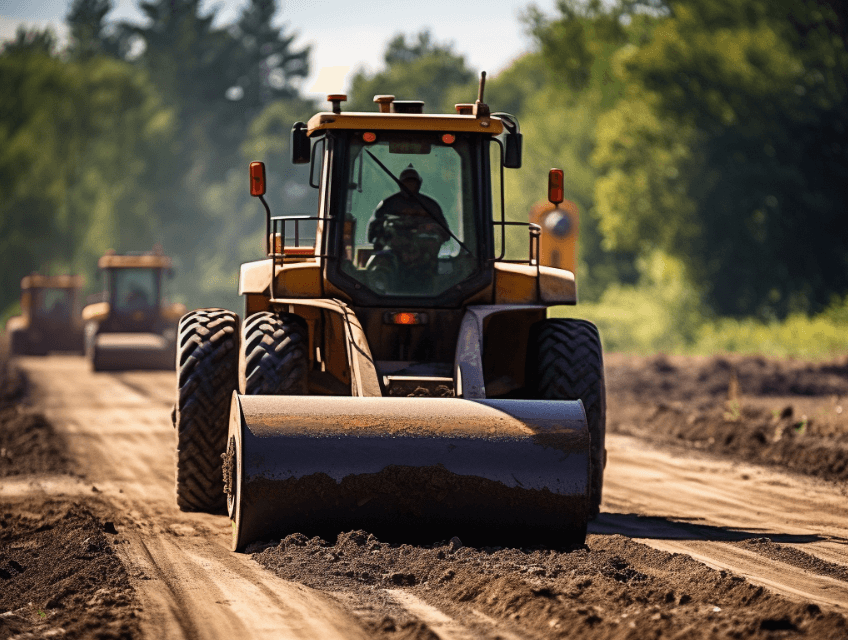
This process involves compacting the soil to achieve a dense and stable foundation that can withstand the weight and traffic load of vehicles. Failure to properly compact the soil can lead to various issues such as settlement, rutting, and pavement failure.
The objective of soil compaction in road and pavement design is to increase the soil’s density and improve its load-bearing capacity. By compacting the soil, its particles are rearranged, reducing air voids and increasing the contact between particles. This, in turn, increases the soil’s shear strength and stability, making it less susceptible to deformation under traffic loads.
Proper soil compaction is essential for several reasons. Firstly, it ensures that the pavement or road surface remains even and stable, preventing the formation of potholes, cracks, and other surface irregularities. This is crucial for the safety and smooth operation of vehicles, as uneven surfaces can cause accidents and damage to vehicles.
Additionally, proper soil compaction helps to minimize soil settlement. Settlement occurs when the soil compresses under the weight of the pavement or road, causing the surface to sink. This can result in uneven pavement surfaces, decreased drainage, and increased maintenance costs. By properly compacting the soil, the risk of settlement is significantly reduced, prolonging the lifespan of the road or pavement.
Moreover, soil compaction plays a vital role in controlling moisture content. Compacted soil has fewer air voids, which means there is less space for water to penetrate and accumulate. This helps to prevent water from infiltrating the soil, reducing the risk of water-induced damage such as erosion and frost heave.
In conclusion, proper soil compaction is crucial in road and pavement design to ensure a strong and stable foundation. It improves the soil’s load-bearing capacity, minimizes settlement, and enhances surface evenness, ultimately leading to safer and longer-lasting roads and pavements.
The Process of Soil Compaction
Soil compaction is the process of reducing the volume of soil by removing air between soil particles and increasing its density. It involves applying pressure or force to the soil, resulting in the particles being packed more closely together. This process has several steps and can be achieved through various methods.
- Preparation: Before starting the compaction process, it is essential to prepare the soil properly. This may involve removing any debris, rocks, or organic matter that could interfere with the compaction process.
- Moisture control: The moisture content of the soil plays a crucial role in the compaction process. The soil needs to have an optimal moisture content to facilitate proper compaction. If the soil is too dry, it may be challenging to achieve the desired density, while if it is too wet, the soil may become too sticky and difficult to compact.
- Selection of compaction equipment: Various types of compaction equipment are available, including vibratory rollers, sheepsfoot rollers, and plate compactors. The choice of equipment depends on factors such as the type of soil, the desired compaction method, and the project requirements.
- Compaction method: Different compaction methods can be used depending on the specific needs of the project. The most common methods include static compaction, dynamic compaction, and impact compaction. Static compaction involves applying a static load to the soil, while dynamic compaction uses repeated impacts to compact the soil. Impact compaction involves dropping a heavy weight onto the soil.
- Compaction control: Throughout the compaction process, it is crucial to monitor and control the compaction levels to ensure the desired density is achieved. This can be done by conducting density tests using various techniques such as sand cone test, nuclear density gauge, or plate load test.
Overall, soil compaction is a critical process in construction, agriculture, and civil engineering, as it helps improve soil stability, reduce settlement, increase load-bearing capacity, and prevent soil erosion. By following the proper compaction process, the soil can become more suitable for construction purposes and ensure the longevity and durability of the structures built on it.
The Types of Soil Compaction Techniques
Soil compaction is a process used to increase the density and stability of soil. There are several techniques that can be used to achieve this, each with its own advantages and disadvantages. Here are some of the most common types of soil compaction techniques:
- Tamping: Tamping is a manual compaction technique where a heavy metal or wooden tool is repeatedly pounded onto the soil surface. This helps to break up any loose material and compress the soil particles together.
- Vibratory Plate Compactors: Vibratory plate compactors are machines that use vibration to compact the soil. These machines are typically used for smaller areas and can be operated by one person. They are effective in achieving compaction in cohesive soils.
- Sheepsfoot Rollers: Sheepsfoot rollers are heavy rollers fitted with protruding metal studs or feet. As the roller moves, these studs create pressure on the soil, resulting in compaction. Sheepsfoot rollers are effective in compacting clayey soils.
- Pneumatic Rollers: Pneumatic rollers are machines that use air pressure to compact the soil. They have rubber tires filled with air, which helps to exert uniform pressure on the soil surface. Pneumatic rollers are commonly used for compaction of granular soils.
- Vibratory Rollers: Vibratory rollers are machines equipped with vibrating drums or plates. These rollers use vibration to compact the soil particles. They are effective in achieving compaction in both cohesive and granular soils.
- Dynamic Compaction: Dynamic compaction is a technique that involves dropping heavy weights onto the soil surface. This creates a shockwave that helps to compact the soil. Dynamic compaction is often used for compacting loose or granular soils.
Each type of compaction technique has its own application and limitations. The choice of technique depends on factors such as the type of soil, the desired compaction level, the area to be compacted, and the available equipment.
Soil compaction is an important process in construction and civil engineering projects. It helps to improve the stability and load-bearing capacity of the soil, which is crucial for the longevity and safety of structures. Understanding the different types of soil compaction techniques can help engineers and contractors select the most appropriate method for their specific project requirements.
The Equipment Used in Soil Compaction
In order to achieve the objective of soil compaction, various types of equipment are used. These tools and machinery aid in compacting the soil to increase its density and enhance its load-bearing capabilities. Some commonly used equipment in soil compaction include:
- Plate Compactors: These compactors consist of a heavy steel plate that vibrates to compress the soil. They are commonly used for compacting small areas and are highly maneuverable.
- Vibratory Rollers: Vibratory rollers have two parallel steel drums that vibrate to consolidate the soil beneath them. These rollers are effective in compacting large areas and are available in different sizes.
- Pneumatic Rollers: Pneumatic rollers use rubber tires instead of steel drums for compaction. The tires are filled with air, and the weight of the roller can be adjusted to achieve the desired compaction level. These rollers are suitable for compacting cohesive and granular soils.
- Sheepsfoot Rollers: Sheepsfoot rollers consist of multiple rectangular or pentagonal steel drums with protrusions called “feet.” These feet create pressure points on the soil, leading to better compaction. Sheepsfoot rollers are commonly used for compacting clayey soils.
- Tampers: Tampers, also known as jumping jacks or rammer compactors, are handheld machines that use a percussive force to compact the soil. They are typically used for small, confined areas and are highly effective in achieving high compaction densities.
- Smooth-Wheel Rollers: Smooth-wheel rollers, as the name suggests, have smooth metal wheels without any protrusions. They are suitable for compacting granular soils and are commonly used in road construction projects.
It is important to select the appropriate equipment for soil compaction based on the soil type, project requirements, and compaction objectives. Proper equipment selection and operation are crucial to ensure the desired level of compaction is achieved and the soil’s load-bearing capacity is improved.
The Factors Affecting Soil Compaction
Soil compaction is an important consideration in various construction and agricultural practices. It refers to the process of increasing the density and reducing the porosity of soil, which can have significant impacts on soil health and productivity. Several factors can influence soil compaction, including:
- Moisture Content: The moisture content of the soil plays a crucial role in its compaction. Moist soils are more prone to compaction due to the increased weight and reduced air spaces between soil particles.
- Soil Type: Different soil types have varying levels of compaction susceptibility. Clay soils, for example, are more susceptible to compaction due to their fine particle size and tendency to retain water.
- Soil Structure: The overall structure of the soil, including its arrangement of particles and the presence of aggregates, can affect its compaction. Well-structured soils with good aggregation are generally more resistant to compaction.
- Load Type and Magnitude: The type and magnitude of the load applied to the soil can influence the degree of compaction. Heavy machinery, vehicles, and foot traffic exert different levels of pressure on the soil, leading to varying degrees of compaction.
- Operating Conditions: The conditions under which compaction occurs, such as temperature and moisture during compaction, can impact the efficiency and effectiveness of the process. Optimal operating conditions are necessary to achieve the desired level of compaction.
Understanding these factors is essential for achieving the objective of soil compaction. The main objective of soil compaction is to increase soil density, improve load-bearing capacity, and reduce excessive settlement or subsidence. By compacting the soil, it becomes more stable, reducing the likelihood of structural damage and allowing for better plant growth and root development.
In summary, factors such as moisture content, soil type, soil structure, load type and magnitude, and operating conditions can all affect soil compaction. Understanding these factors and their influence is important for achieving the objective of improving soil density and stability in various construction and agricultural practices.
The Importance of Testing Soil Compaction
Objective:
The objective of testing soil compaction is to assess the density and moisture content of soil, which are crucial factors for various construction and agricultural activities. This testing process helps determine the suitability of soil for specific purposes and allows for appropriate measures to be taken to improve its compaction if needed.
Soil:
Soil, a natural resource, serves as the foundation for many human activities. It provides support and stability for buildings, roads, and other structures. Additionally, soil plays a vital role in agriculture by acting as a medium for plant growth and providing essential nutrients and water for their survival.
Importance of Testing:
Testing soil compaction is crucial for several reasons:
- Structural Stability: Testing soil compaction ensures that the soil has the necessary density and moisture content to provide adequate support and stability for constructed structures. Insufficient compaction can lead to settlement or structural failure.
- Plant Growth: For agricultural purposes, testing soil compaction helps determine whether the soil is suitable for plant growth. Poor compaction can hinder root development, water infiltration, and nutrient absorption, resulting in reduced crop yields.
- Optimal Performance: Different activities and constructions require specific levels of soil compaction. By testing the compaction, engineers and contractors can ensure that the soil meets the desired specifications, leading to optimal performance and longevity of structures.
- Prevention of Soil Erosion: Adequately compacted soil helps prevent soil erosion by reducing water infiltration and retaining moisture. Testing allows for the identification of areas prone to erosion and the implementation of necessary measures to prevent it.
Testing Methods:
Several methods are available to test soil compaction:
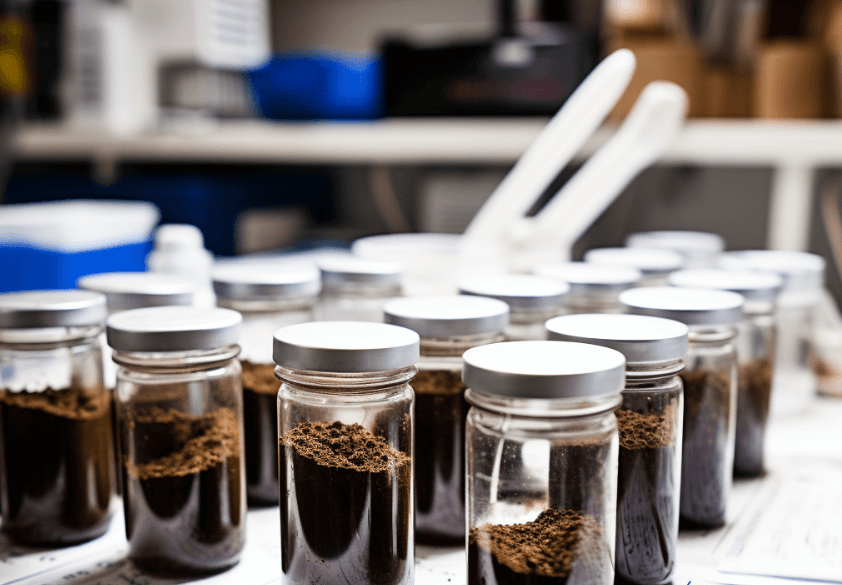
- Standard Proctor Compaction Test: This method evaluates the maximum dry density and optimum moisture content of soil. It involves compacting soil samples at various moisture levels and measuring their densities.
- Modified Proctor Compaction Test: Similar to the standard test, this method utilizes higher compaction energy and is often employed for road and highway construction.
- Dynamic Cone Penetrometer Test: This test measures the resistance of soil to penetration by a standard-sized cone. It provides a quick and portable method to estimate soil compaction in the field.
- Nuclear Density Gauge Test: This non-destructive test uses radiation measurements to determine soil density. It is commonly used for rapid and accurate assessment of soil compaction.
Overall, testing soil compaction is imperative to ensure the stability of structures, promote plant growth, and prevent soil erosion. By selecting the appropriate testing methods, professionals can assess soil compaction levels accurately and take necessary measures to improve soil conditions when required.
FAQ:
What is soil compaction and why is it important?
Soil compaction is the process of increasing the density of soil particles by reducing the air spaces between them. It is important because compacted soil can negatively impact plant growth, reduce water infiltration, and increase erosion.
What are the objectives of soil compaction?
The objectives of soil compaction can vary depending on the specific application. Some common objectives include improving soil stability, reducing settlement, increasing load-bearing capacity, and improving overall soil performance.
How is soil compaction achieved?
Soil compaction can be achieved through various methods, such as mechanical compaction using heavy machinery, dynamic compaction using vibratory equipment, or even the natural compaction that occurs due to recurring traffic or the weight of structures.
What are the negative effects of soil compaction?
Soil compaction can lead to decreased pore space, which reduces the availability of water, air, and nutrients for plant roots. It can also increase soil erosion, limit root growth, and decrease soil fertility. Additionally, compacted soil can become more prone to flooding and have reduced load-bearing capacity.
How can soil compaction be prevented or mitigated?
Soil compaction can be prevented or mitigated by implementing practices such as proper soil management, avoiding excessive traffic or heavy machinery on the soil, promoting organic matter content, improving soil structure, and using appropriate tillage techniques.
What is soil compaction and why is it important?
Soil compaction is the process of mechanically compressing soil particles, reducing the volume and increasing the density. It is important because it affects soil porosity, water infiltration, and overall soil health. Compacted soil can lead to poor plant growth, drainage issues, and erosion.
What are the objectives of soil compaction?
The objectives of soil compaction include increasing soil stability, improving load-bearing capacity, reducing settlement, minimizing water infiltration, and enhancing overall soil quality. It is commonly done in construction projects to ensure a solid foundation and to prevent future soil movement or settling.

